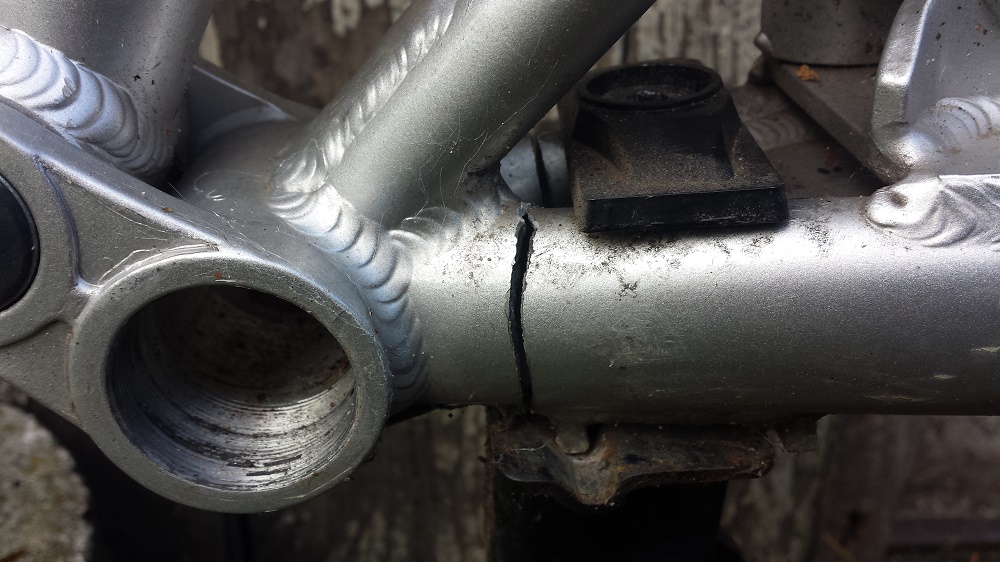Safe cycling:
Experience Hamburg differently!

Weights of bicyclesMy aim here is not to spoil the joy of a light bicycle for you. Only other aspects are more important to me when it comes to my bike rental. So if you are primarily interested in a very light bike, then you should quickly click on and turn to more pleasant pages. How much does a light bike weigh?Aluminum, steel or carbon?The resultsEquipment and componentsSustainable bikes |
How much does a lightweight bike weigh?The question: "What is a light bicycle?" is a bit like the question of whether pears are heavier than apples. Of course it depends on the equipment. And the belief that aluminum bicycles are lighter in any case than steel bicycles is not true, as I just noticed in a risky self-experiment with my bicycles. I spared no effort and expense and weighed all 300 bicycles with my son Mik in a whopping 10 hours. And then I was amazed what (my) bicycles actually weigh... |
Aluminum, steel or carbon?To come to the point: Carbon is certainly the lightest material, but is not suitable for my bike rental for reasons of durability and because of the high maintenance and acquisition costs. So aluminum or steel? After about 100 years of bicycle history and development you could think that the question of the more suitable frame material would have been clarified. Despite its hardness, steel is an elastic material and neutralises the forces that occur when cycling, with a slight loss of power with regard to the transmission of power to the road. Before a steel frame breaks, it bends sooner. All supporting parts of my rental bikes are of course made of elastic steel and can not break. Thus, the bikes do not have to be completely replaced every year, but are driven until the paint is too battered ... The suspension forks, which are intended to compensate for the stiffness of the aluminum frame, compensate the reduced weight also. On top, you can easily drop a few hundred bucks to get a good suspension fork. And even them are often very willing to be repaired soon. Incidentally, bicycle frames made of aluminum are not particularly sustainable, not only because of the shorter life expectancy but also because of the considerably poorer energy efficiency. Who in the end pulls the profit from aluminum frames and forks, you decide yourself. Just ask for fun, how long the bike dealer of your trust gives you a guarantee for his sold aluminum frames! |
The results (on average):To say it in advance: If you only want to save weight, you can certainly put together a bike with only 7 kg. Just leave away all that is somehow durable and suitable for everyday use. Anyone who somehow understands something of it will then realize that you have pocketed hundreds of dollars in this marvel. Nevertheless, you will not win the Tour de France with it. That works different. The approximately 300 bicycles of the bicycle rental "Experience Hamburg differently" served the following average values as a basis. For the steel frames, I already use the lightest model series. Of course, there are considerably heavier ones. Heights over 24 inches are of course heavier and have not entered the rating. The lock weight of each bike (div. Abus* spiral locks ~ 500 g) is included. This is not about whitewashing! If you compare these weights with other bikes, please note that safety, reliability and longevity are my top priorities. Only then does a weight saving come into consideration and you also have to deduct the weight of the lock. Current city bikes made of steel with full equipment, like hub dynamos, 7-speed hub gears, mudguards, steel luggage racks and steel handlebars weigh between 19 and 20 kg; that equals bicycles from the 50's! City bikes with aluminum frames weigh up to one kilogram less with the same equipment, which hardly makes any sense at around 20kg. (not equipped with suspension forks). My lightest city bikes weigh between 17 and 19 kg and are made of stainless steel. Fully equipped steel/aluminum trekking bicycles weigh between 16 and 19 kg, though it should be noted that my lightest trekking bike has a steel frame (without suspension fork). Parts of the weight savings are due to the lighter circuits. The mountain bikes (26' inch) made of aluminum without suspension fork weigh 14 kg and those made of aluminum with suspension fork 15 kg. My most expensive mountain bike (fiberglass and suspension fork) weighs 13.5 kg. Logically, there are lighter mountain bikes, but their use in a bicycle rental in Hamburg is out of the question for the high cost and low demand. Current children's bicycles (24 inches) with aluminum frames, hub dynamo and 3-speed hub gear weigh a devastating 14.5 kgon average, which can not be fun for dwarves. Sorry. I didn't found lighter ones yet. The tandems (steel frame) move with roundabout 29 kg over Hamburg's streets so you end up at 14.5 kg per person. The Pedersen * bicycle of the rental weigh without lock 15.9.. More on this The "classic road bikes" (steel frame) are on average at a flattering 11.5 kg. |
The equipment of the bicycles - for my customers only the best!These are well-maintained bikes for me. My babies, lovingly put together screw by screw, as light as possible, but with the supporting and safety-relevant components such as frame, handlebar and luggage rack preferably made of steel. Thus you are well served with steel in terms of safety and reliability! Read: sustainable components! |
The components in detail:
|
Exceptions in my rental:
Have a good and safe ride! * Mentioned or pictured brand names as well as brand logos are property of the respective company and serve only the description of the article. |
